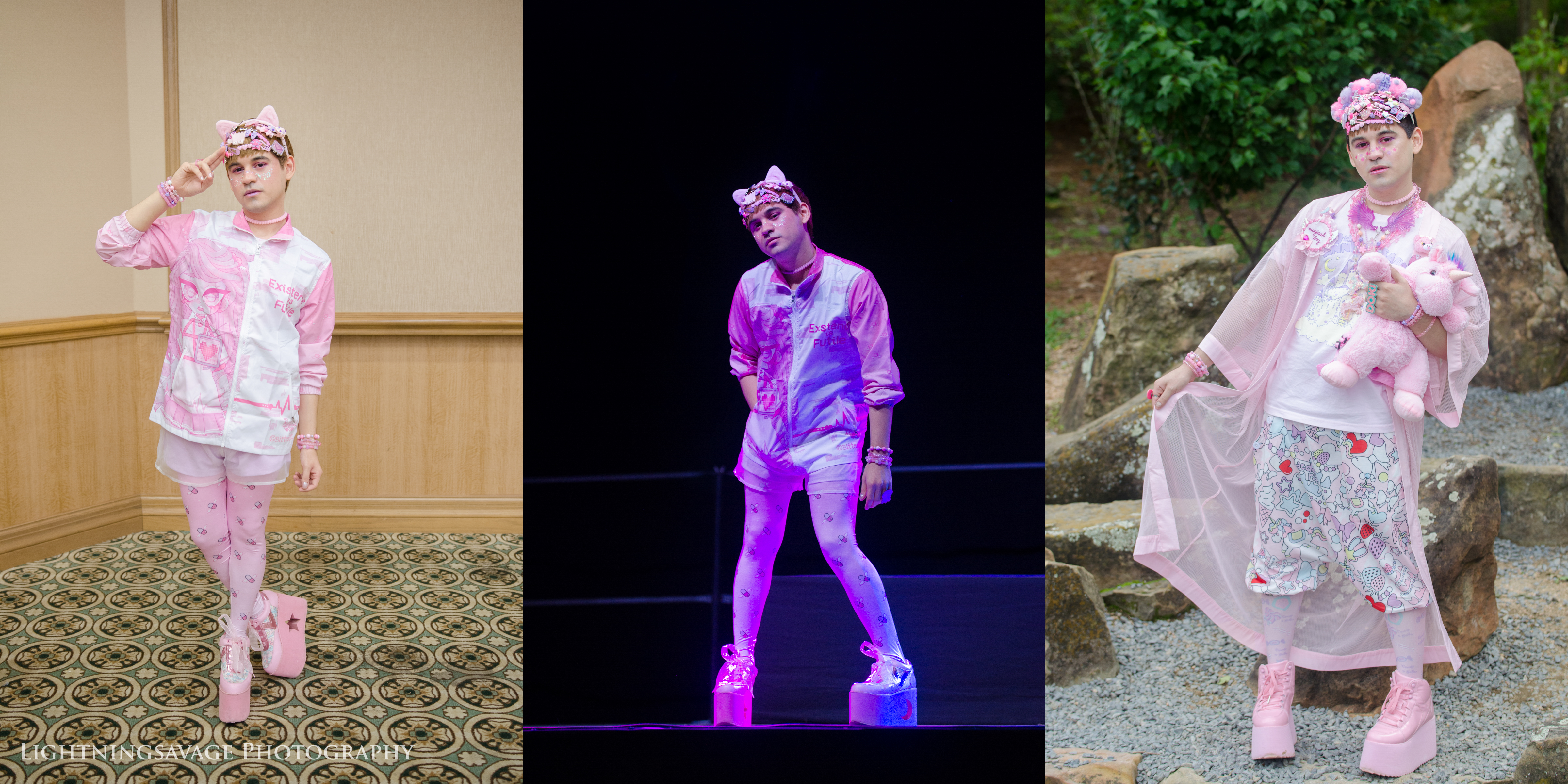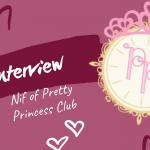Individual Posing Tips—Part III: Masculine

Welcome! If you’re new here, I highly recommend you read Part I—General and Part II—Feminine of this posing tips series. If you’re only interested in masculine posing, reading the feminine post isn’t necessary, but it can help you better visualize the differences between masculine and feminine posing, as well as to better understand my conclusion to this post.
Men! Boys! Ouji and Aristocrat wearers! Crossplayers! Transmen, queer, and the androgynous! Read below for some tips—I haven’t forgotten about you!

Taylor Ricketts, Khalif Siahaan, Avi Rolon, and Vic Von Fabre
Posing masculine models is sometime quite a difficult thing. Especially since I tend to shoot more feminine models, my masculine posing was quite awkward for a large amount of time. It’s still something that I’m working on, but I am getting better the more I pose masculine fashions and cosplays.
Like feminine posing, and posing in lolita, posing masculine models has several general rules—unlike the feminine rules, however, they are more like guidelines and can and will often be broken when it suits the model or photographer, or the vision that either of them have for the shoot.
I started a personal Instagram (@kaldec_ if you want to follow!) for myself as a brand. Part of the reason for this was to get in front of the camera more, build relationships with brands, and learn how to better pose masculine models in a flattering way. It’s much easier to start with posing yourself in front of a mirror (or in my case, a camera with live view on) than it is to pose other people. This helped me tremendously, and it’s also helped me be able to better articulate to someone else how to pose. As a photographer, this is an invaluable skill to have in my arsenal. I’ve used some photos from @kaldec_ to illustrate masculine vs. feminine posing.

Kal Frenzel. Photos by Becky Maset
Don’t Try Too Hard
The first thing that I learned right off the bat is to not try too hard. With masculine models, it’s best to show poses that look (or are) candid, versus posed. Masculine posing (and posing in general) should look natural, and I find that many masculine models go stiff if you try to pose them too much (or if they think about posing too much). In the above photos, I was really struggling to pose. The Moi Meme Moitie gilet I was wearing cinched my waist in a very feminine way, and I found that posing overly masculine wasn’t working with the gilet itself. I settled for just posing how I felt and not thinking about it too much—that and Becky took a billion photos of me.
Be relaxed, and remember that most photographers these days work in digital, and can take as many re-do shots as you need (if they’re willing!).
The Two Types of Masculine Posing
From what I’ve learned, I can separate masculine posing into two categories: straight and leaning. Choosing which one to use has a lot to do with what look you want the end result to have, whether it’s a formal or more casual. A formal look will be a lot straighter, maybe front to the camera, and will emphasize broad shoulders and a confident feel. More casual looks will have a lot more drapey, leanier, and hunchier posing.

Hunches: Kal Frenzel
Stand Straight—Or Hunch
The best way to ooze masculinity is to be confident. Don’t let the clothes wear you—you’re dressed well, and you know it. Make sure that your shoulders are back and that you’re not too hunched. Or, hunch a lot. It depends on what kind of look you’re going for. I tend to hunch a lot, personally, but that fits the style and the clothes that I wear far more than standing straight. Suffice to say, though, I would never hunch in a suit, or in EGA. A straighter, more formal look gives off a much more commanding presence than a hunched look.
Only one photo is hunched in the collage above, and it’s fairly easy to spot which (the middle one, in case you need some confirmation). In ouji fashion, I nearly always choose the shoulders back “straight” approach, as it’s more in line with the royalty or guardian feel that I like my coords to have. In the case of the one on the left, I had just bought that vest and was trying to see how it photographed best—I preferred a non-hunched pose for this one. For the middle photo, I wanted a super casual feel, which lended best to hunching.

Kal Frenzel. Photo by Jonathan Vilches
Make Straight Angles, Even if Leaning
With feminine posing, models generally try to achieve the best S curve that they can.
The masculine alternative to this is what I call “straight angles”. You should be straight, but not flat front to the camera. A 20–45-degree angle is the most flattering. That’s why you see a lot of generic headshots (like business headshots, for example) with the models posed at a 20-degree angle. It’s a generic angle that looks great for just about everyone and every body type.
Even if you’re going more for a casual look, one that leans, try to remember to keep your angles straight, in general. Don’t be stiff, but try not to make an exaggerated S curve with your hips or back.

Robbie Coldwell, Stevie Quinlan, Kal Frenzel
As you see in the above, the angles are quite similar to feminine S curves, however, there are usually fewer “bends” or angle changes in masculine posing. Basically, it’s much easier to be successful at general masculine posing if you don’t try to pose at all, as what we generally imagine when we think of “posing” is typically feminine. Instead of thinking about posing, try to think about portraying yourself as masculine in nature rather than in a pose. This should help you at least get in the right general direction to figuring out poses for yourself.
Keep Your Energy
A lot of masculine posers forget to do this, and their poses seem kind of blah—probably because a lot of masculine poses are “just standing there” or leaning against a wall! I highly recommend reading this section in my general post, even if you’re in a hurry. This is such a huge point for everyone, but specifically people who present masculine.
Read it? Ok. Now, even when you’re leaning against a wall, or hunching, there should still be potential energy somewhere in your photo to capture the viewer’s attention. Whether it’s eyes, muscles, neck, chin, arms, or body position, the energy needs to be there. This will take a “just standing there” pose to one that makes the viewer ask important questions and look longer. Even if it’s just for social media, the longer someone looks at a photo, the more likes you’re likely to get.

Tarrah Chilcott, Sakurako, Collin Quinlan, Jack Angsty
Masculine Posing Highlight
As I said above, these are mainly just guidelines to get you started. What will help you the most is to find yourself a full-length mirror, dress up in the clothes that you are going to wear, and pose. Find your angles, find that one pose that hides your least favorite features and brings out the best parts of your coord. Pay attention to the light and the way that it hits your face. Be aware of the camera and your own body, and find what’s comfortable and/or what looks good for you in particular. This will take practice, but the more time you give yourself to get this down, the better off at posing you will be. Let me highlight a specific model to illustrate this point: Vic Von Fabre.

Vic Von Fabre
Vic Von Fabre is a leany boy. A lot of his poses have a lean to them that boarders on a curve—and this isn’t bad! On anyone else, a lot of his poses would come off a bit feminine, just like mine did in that gilet. But he’s figured out a way to remain fundamentally masculine, and he’s probably done this subconsciously. Due to his personality and the fashion he wears, his poses really work for him, whether they’re classified as leany, straight, or curvy. He comes across as a young, casual, fun-loving, free-spirit, and from the little time I’ve spent with him I’d say this is a correct reading.
The point of this analysis is to say that whether you’re posing to present masculine or feminine, or to model as either fashion, what I say as “masculine” or “feminine” might not work for you personally. The guidelines above are meant as a solid starting point and generalization of what I look for when posing strangers based on what feel I want. An S curve, for example, might be generally feminine, but it might not look feminine on you.
To see more of Vic, you can follow him on Instagram at @vicvonfabre.
Stay tuned for the common tweaks I make when I’m posing other people (and myself), as well as posing tips posing onstage in fashion shows, and more!
Kal from Lightningsavage Photography specializes in creative portrait photography for J-Fashion enthusiasts and more. He has served as the J-Fashion event photographer for Oni-Con 2016–2020, as well as fashion shows, meetups, and personal shoots. He is also a co-owner of Kuroshiro Kawaii. You can follow him on Instagram at @lightningsavage_photography and @kaldec_
He is currently into visual kei and EGA fashions.








